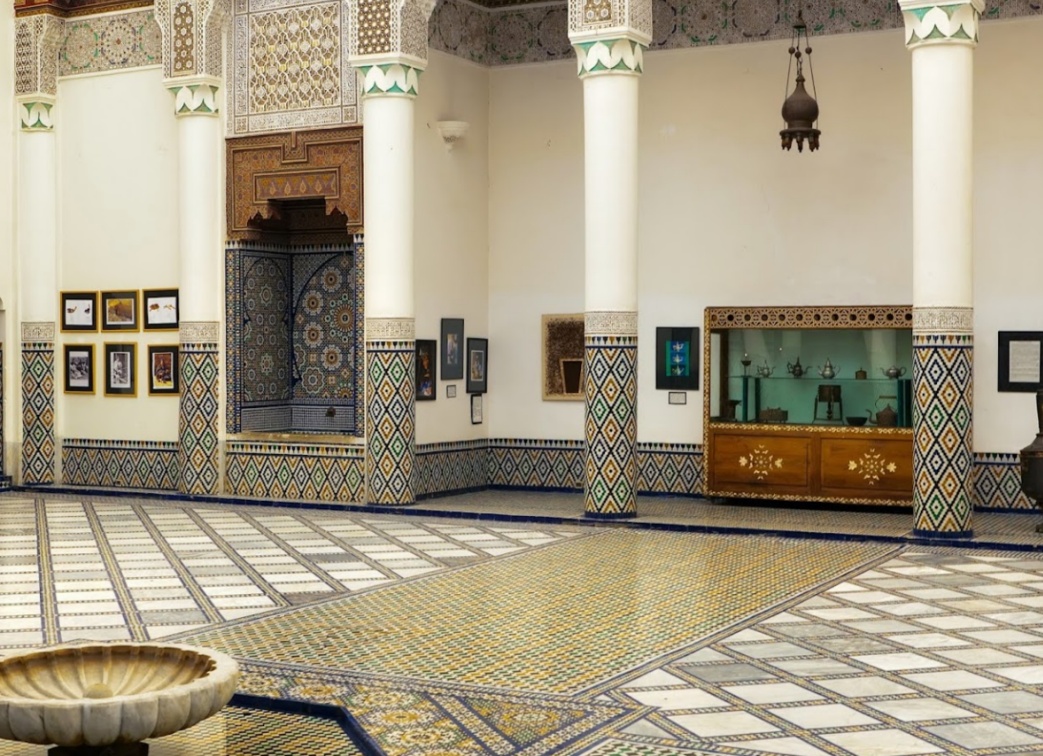Dar Si Said Museum: A Portal to Moroccan Art and Heritage
Table of Contents
Introduction to Dar Si Said Museum
Nestled in the vibrant heart of Marrakech, the Dar Si Said Museum, also known as the Museum of Moroccan Arts and Crafts, offers a captivating glimpse into the rich cultural tapestry of Morocco. Housed in a stunning 19th-century palace that was once the home of Si Said B. Moussa, the brother of the Grand Vizier Bou Ahmed, this museum showcases an extensive collection of Moroccan artifacts, demonstrating the country’s deep artistic heritage and craftsmanship. From intricate woodwork and ceramics to historic textiles and jewelry, the Dar Si Said Museum serves not only as a repository of art but also as a celebration of Moroccan life and history.
The Historical Significance of Dar Si Said
Built in the second half of the 19th century, the Dar Si Said is itself a masterpiece of Moroccan architecture, featuring Andalusian-style gardens, elaborate tile work, carved cedar panels, and stucco decorations that speak to the opulence of the time. The house was transformed into a museum in 1930, under the French Protectorate, making it one of the oldest museums in Marrakech. The building’s design, with its lush courtyards and ornate rooms, provides an authentic backdrop that enhances the visitor’s experience of the historical objects on display.
Exploring the Collections
The Dar Si Said Museum houses one of the richest collections of Moroccan decorative arts in the country. Each room within the palace is dedicated to a different craft, showcasing the regional diversity and historical depth of Moroccan artistry. Notable collections include:
- Ceramics and Pottery: Featuring both ancient and modern examples, the ceramics display illustrates the evolution of styles and techniques in Moroccan pottery, including the famous blue pottery from Fez and the green pottery from Tamegroute.
- Carpentry and Woodwork: The museum displays an exquisite collection of wooden artifacts, highlighting the intricate marquetry and carved cedar wood that Moroccan craftsmen are renowned for. This includes beautifully crafted doors, chessboards, and furniture.
- Metalwork: This exhibit showcases finely crafted metal items, including traditional weapons, stunning brass lanterns, and silver teapots that demonstrate the skill of Moroccan metalworkers.
- Textiles and Clothing: The museum houses a variety of traditional Moroccan clothing and textiles, including caftans, Berber carpets, and kilims. Each piece reflects the regional variations and the intricate embroidery and weaving techniques passed down through generations.
- Jewelry: Featuring a dazzling array of Berber and Arab jewelry, this collection includes everything from massive silver necklaces to delicate gold bracelets, adorned with coins, colored glass, and precious stones.
Architectural and Artistic Highlights
One of the museum’s most breathtaking features is its architecture. The central courtyard, with its traditional riad design, includes a symmetrical garden, a central fountain, and is surrounded by rooms that exemplify classical Moroccan architecture with their high wooden ceilings and ornate tile work. The use of zellij (mosaic tile work) and intricate plasterwork throughout the museum not only decorates but also tells stories of Moroccan aesthetics and the symbolic meanings behind them.
Educational Programs and Cultural Outreach
The Dar Si Said Museum is dedicated to the preservation of Moroccan culture through not only its exhibits but also its educational programs. The museum hosts various cultural events, workshops, and exhibitions that delve into Moroccan arts and crafts. These programs are designed to engage the community and visitors alike, providing deeper insights into the traditional techniques and cultural significance of the artifacts displayed.
Visitor Experience
Visitors to the Dar Si Said Museum can expect more than just a visual tour; they are offered a multi-sensory immersion into Moroccan culture. The museum’s layout encourages a journey through time, from the oldest artifacts to contemporary pieces, allowing one to experience the evolution of Moroccan art. Informative plaques in multiple languages provide context to the displays, enriching the educational value of the visit.
How to Visit
Located close to the Bahia Palace in Marrakech, the Dar Si Said Museum is easily accessible from major points in the city. It is open to the public six days a week, with guided tours available to enhance the visitor experience. The entrance fee is modest, making it an affordable cultural excursion for travelers.
Conclusion
The Dar Si Said Museum is a treasure trove of Moroccan art and craftsmanship. It stands as a testament to the country’s rich cultural heritage and the artisans’ unparalleled skills over centuries. For anyone visiting Marrakech, a stop at this museum is essential to fully appreciate the artistry and history that shape Moroccan culture. Here, every artifact tells a story, and every room opens a new chapter in the splendid narrative of Morocco’s artistic legacy.
Additional Resources
For those captivated by the rich cultural tapestry of Marrakech, consider extending your exploration to other notable landmarks that highlight the city’s artistic and historical diversity. The Marrakech Museum, housed in the exquisite Dar Menebhi Palace, offers a deep dive into Moroccan art and architecture with its impressive array of traditional and contemporary exhibits. Additionally, the Yves Saint Laurent Museum provides a modern contrast, celebrating the life and legacy of the famed designer with a collection of his influential fashion pieces and personal artifacts. Together, these museums offer a comprehensive look at both the traditional and modern influences that shape Marrakech’s vibrant cultural scene.




Marrakech Museum: A Treasure Trove Of Moroccan Art And History - Private Driver Morocco
[…] those interested in exploring more about Moroccan culture and history, the nearby Dar Si Said Museum offers insights into the traditional crafts and artistic heritage that define the region, while the […]